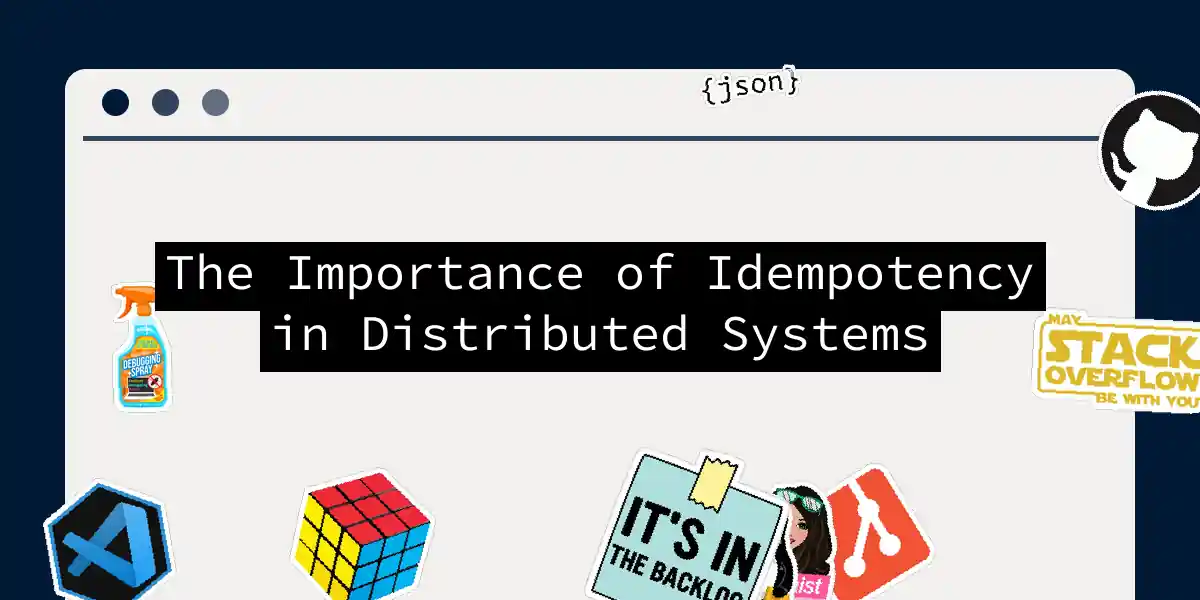Introduction to Idempotency
Imagine you’re at a coffee shop, and you order a latte. You hand over your money, but just as the barista is about to take it, the power goes out. When the lights come back on, you’re unsure if your payment was processed. So, you try again. In a non-idempotent system, this could result in you being charged twice. However, if the payment system is idempotent, it ensures that even if you try to pay multiple times, you’ll only be charged once. This concept is crucial in distributed systems, where network failures and service crashes are common.
What is Idempotency?
Idempotency is a property of an operation that guarantees the same result regardless of how many times it is executed. In other words, performing an idempotent operation multiple times should not change the outcome beyond the first successful execution. This principle ensures consistency, reliability, and predictability in distributed systems.
Examples of Idempotent Operations
- Creating a Resource: If a resource doesn’t exist, creating it will always result in the same resource being created. If the resource already exists, creating it again will have no effect.
- Updating a Resource: If a resource exists, updating it will always result in the same updated resource. If the resource doesn’t exist, attempting to update it will have no effect.
- Deleting a Resource: If a resource exists, deleting it will always result in the resource being deleted. If the resource doesn’t exist, attempting to delete it will have no effect.
Benefits of Idempotency in Distributed Systems
Data Consistency and Integrity
Idempotency ensures that updates are uniform across multiple services, maintaining data integrity and coherence. This prevents disparities from arising due to conflicting changes.
Prevention of Unintended Side Effects
Non-idempotent operations risk unintentional consequences when repeated. Idempotency guarantees that executing the same operation multiple times doesn’t introduce unexpected side effects, safeguarding against accidental duplications or undesired changes.
Reliable Retries and Error Handling
Network disruptions or service failures are common in distributed systems. Idempotent operations allow for reliable retries without concern for negative outcomes. Repeated attempts remain consistent with the first, preserving data accuracy.
Implementing Idempotency
Using Unique Identifiers
One of the most common approaches to implementing idempotency is by using unique identifiers assigned to each request. This ensures that duplicate requests are detected and handled appropriately.
Example in JavaScript
Here’s how you might implement idempotency using a unique identifier in JavaScript:
const uuid = require('uuid');
// Generate a unique idempotency key
const idempotencyKey = uuid.v4();
// Construct the PUT request options
const requestOptions = {
method: 'PUT',
headers: {
'Idempotency-Key': idempotencyKey
},
// Other request details
};
// Send the request
fetch('https://example.com/resource', requestOptions)
.then(response => response.json())
.then(data => console.log(data))
.catch(error => console.error('Error:', error));
On the server side, you would check if a request with the same idempotency key has already been processed:
const express = require('express');
const app = express();
// Store processed requests
const processedRequests = new Map();
app.put('/resource', (req, res) => {
const idempotencyKey = req.headers['idempotency-key'];
if (processedRequests.has(idempotencyKey)) {
// Return the previous response
res.json(processedRequests.get(idempotencyKey));
} else {
// Process the request
const result = processRequest(req.body);
// Store the result and mark as processed
processedRequests.set(idempotencyKey, result);
res.json(result);
}
});
function processRequest(data) {
// Logic to process the request
return { message: 'Request processed successfully' };
}
Sequence Diagram for Idempotent Request Handling
Here’s a sequence diagram illustrating how idempotency works in handling requests:
Challenges and Considerations
While idempotency is powerful, it comes with its own set of challenges:
- Performance Overhead: Storing idempotency keys or checking for duplicate operations can add overhead and increase latency.
- State Management: Idempotency often requires maintaining state, which can be challenging in stateless architectures.
- Distributed Systems: Ensuring idempotency across distributed systems can be complex and may require distributed locking or consensus algorithms.
Best Practices for Implementing Idempotency
- Use Unique Identifiers: Attach a unique ID (idempotency key) to each request to track and prevent duplicate processing.
- Design for Idempotency from the Start: It’s much easier to design for idempotency from the beginning than to add it later.
- Implement Retry with Backoff: When retrying idempotent operations, use an exponential backoff strategy to avoid overwhelming the system.
- Employ Idempotent HTTP Methods: Prefer idempotent methods (GET, PUT, DELETE) for operations that may be retried; design POST with unique identifiers if idempotency is required.
- Document Idempotent Operations: Clearly document which operations are idempotent in your API specifications.
- Test Thoroughly: Implement tests that verify the idempotency of your operations, including edge cases and failure scenarios.
Conclusion
Idempotency is a critical concept in distributed systems, ensuring that operations can be safely retried without causing unintended side effects. By understanding and implementing idempotency, developers can build more reliable and fault-tolerant systems. Whether you’re designing a payment processing system or a simple web API, considering idempotency in your design can save you (and your users) from many headaches down the road. So, the next time you’re sipping on that latte, remember: idempotency is the unsung hero of distributed systems, ensuring that your payment is processed just once, no matter how many times you try.
